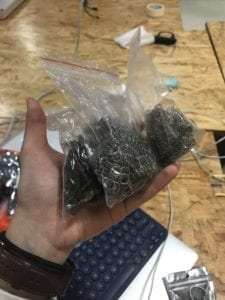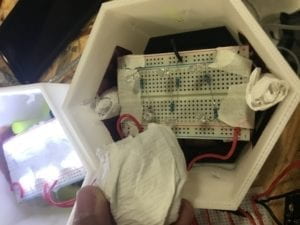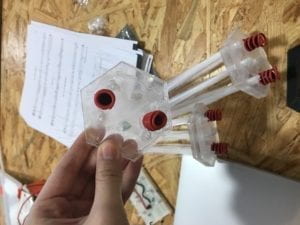Our project is called Grass. The reason is that the shape of the optical fibre looks like a bunch of grass, while the grass can not only light up but also make some sounds of the standard notes when you touch it. However, there is some problem with the third note of E, making the third bunch of grass sounds like an electronic sound created by a DJ.
CONTEXT AND SIGNIFICANCE:
The previous research project was called Bedman. The shape of the bed can be re-grouped according to the way you want to use it, and it can store clothes, cook food, and stretch out wheels to be a means of transportation. This project gave me an inspiration for my midterm project that we can put the existing daily objects, such as the bed, into a brand-new format, which includes functions from other areas or can make the project be in a more aesthetic way. Therefore, we think about making a musical instrument in a creative way. The project called SUN which I have researched also gave me inspiration for the midterm project. By changing the position of the physical ball, the scenery of the sun is changed by the audience. Therefore, I think my midterm project can turn out to be something giving the audience chances to carry out creativity by themselves. These two projects also perfected my definition of interaction. It is not only a process of communication between different roles, but also that the outcomes of the communication should have a significant impact on the world or on each other, either in ways of utilization or aesthetics. Based on an existing project called Glowing Grass, our project can not only give out lights but also can create five standard musical notes. The uniqueness of our project is that our project is not only a piece of art which can give out lights through the optical fibre, but also a musical instrument on which you can play some simple songs. Our project is for everyone but would have more utility for children, since the light of the grass can stimulate their sense for light, and the sounds of the grass can help them to learn the standard musical notes.
CONCEPTION AND DESIGN:
At first, we expected that users interact with our project by pushing or shaking the grass. Therefore, we tried to stick springs on each button, which is below the circuit board and surrounds the columns which connect the button and the circuit board. We expect that when people push the grass, the grass would lean, triggering the board’s leaning. The side of the board which goes down would press the button. However, we found out that the buttons are not sensitive enough, and you have to hold the grass and press it to turn on the button. Therefore, we put some conductive tape on the wall surrounding the circuit, and some conductive tape on each corner of the breadboard so that the user would not need to press too hard on the grass to make a sound. We used 30 LEDs, 5 speakers, 7 breadboards, 50 bunches of optical fibre, many transistors and resistors, 15 3D printed models, and 20 laser-cutting models. The criteria for selecting the materials was that they should be flexible since we need to make a lot of adjustments to perfect our project. Some of our material’s elasticity has to be suitable so that it would be easy for people to push the grass to make a sound, but also that the board can go back to where it was. What is more, we also used the optical fibre which can conduct the light and shape some lighting spots on the top. We thought about using the iron springs and napkin to fix the circuit board. However, they were rejected, because the first one was too hard, making the board hard to move, while the latter was too soft, and the board was hard to go back to the original position.
FABRICATION AND PRODUCTION:
The first significant process was that we used the conductive tape (which was suggested by Nick) to replace the buttons. Since the conductive tape formed a magnet circle, causing the circuit to have the opposite reaction from what it is supposed to be, we changed the circle of conductive tape into two pieces of conductive tape. The second significant process was that we designed different versions of 3D printing models so that we can make adjustments in terms of the circuit. However, we failed for more than 20 times for printing those models, each of which costs about 2 hours to print. The third significant process was that we decreased the number of LEDs so that the light can be strong enough. The fourth significant process was how we decided what kind of player to use. At first, we thought about using the Audacity to play the mp3 file, but the volume was too low. Then we used the SD card, but the sound was still too low. Then we used 5 buzzers instead, the sound was really jarring. However, since the sounds were clear and loud, we kept using the buzzers. During the User Testing Session, almost everyone pointed out that they had to press really hard to make the sound, and the grass will not go back to its original place after that. We used Nick’s suggestion that we put conductive around the breadboard, so that we don’t need to use the button. It was really effective, although at first the circle of conductive tape formed a magnet.
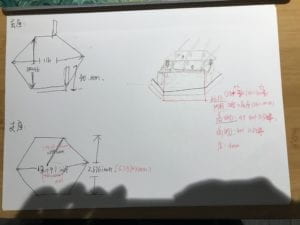
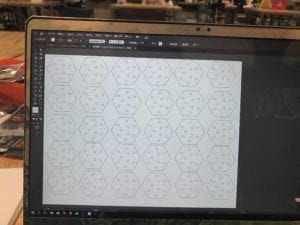
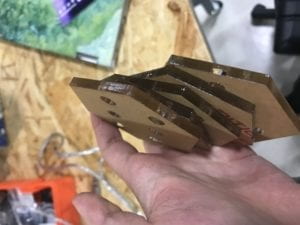
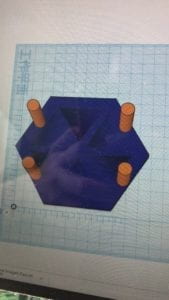
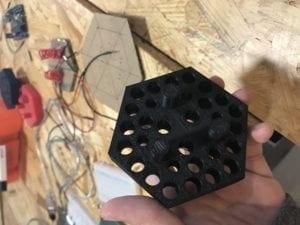
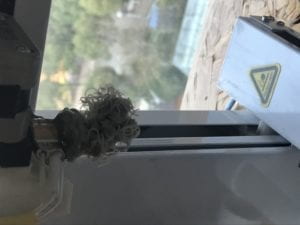
Magnet Circle- Credit to Sheldon
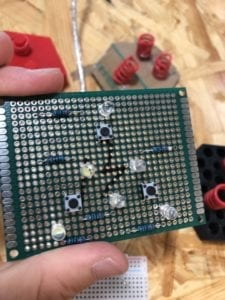
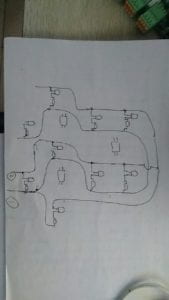
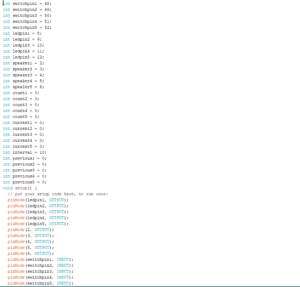
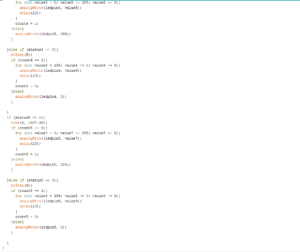
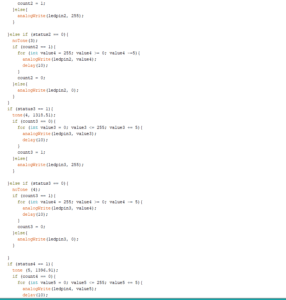
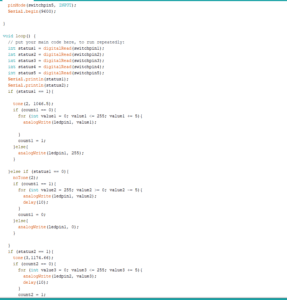
Code- by Sheldon
CONCLUSION:
The original goal of our project is to make a glowing musical instrument. Our project aligns with my definition of interaction that it creates a conversation between the audience and the device, and has some significant utility such as playing some simple songs and creating a sense of aesthetics. However, it does not align with my definition of interaction that this conversation was not continuous enough since the conductive tape was not sensitive enough and the sound was jarring. Ultimately, the audience interacted with our project by pushing the grass to make the sound, and the optical fibre also gave out lights. However, they were confused about which direction should they push the grass in to make the sound. The reason is that we changed the conductive tape circle into two pieces of conductive tapes to avoid forming a magnet, but finally removed one piece from the two, leaving the other piece which has higher conductivity. If I had more time, I would put more conductive tapes on the inside of the wall of the instrument, but also make sure that they are not connected to each other, so that whichever direction you push the grass in, there can always be a sound. What is more, we would fix the annoying sound for note E, and maybe figure out how to use an SD card to play the sounds of harps. We would also add more bunches of grasses instead of having only 5 so that we can play some more complicated songs, What is more, we would also fix the code so that two different notes can be played at the same time, which can be used to play some chords.
I learned from our failure that we should have focused on only one aspect, such as how to make the project a perfect musical instrument or how to make it give out lights in a more aesthetic way, instead of focusing on fusing different functions together while achieving nothing ultimately. I would take away from our accomplishments that always have some backed up plans, and try to use some materials which are so daily that they seem to have no connection with this project (for example, we used the wires to make some springs to replace those iron springs, and used the napkins to fix the position of the breadboard). Generally, I learned that never be restricted by the prototype online if you have, since the materials we have and the creation of the project are not exactly the same with the prototype. It is always important to think about what to do in reality and pay attention to taking the audience’s advice.
